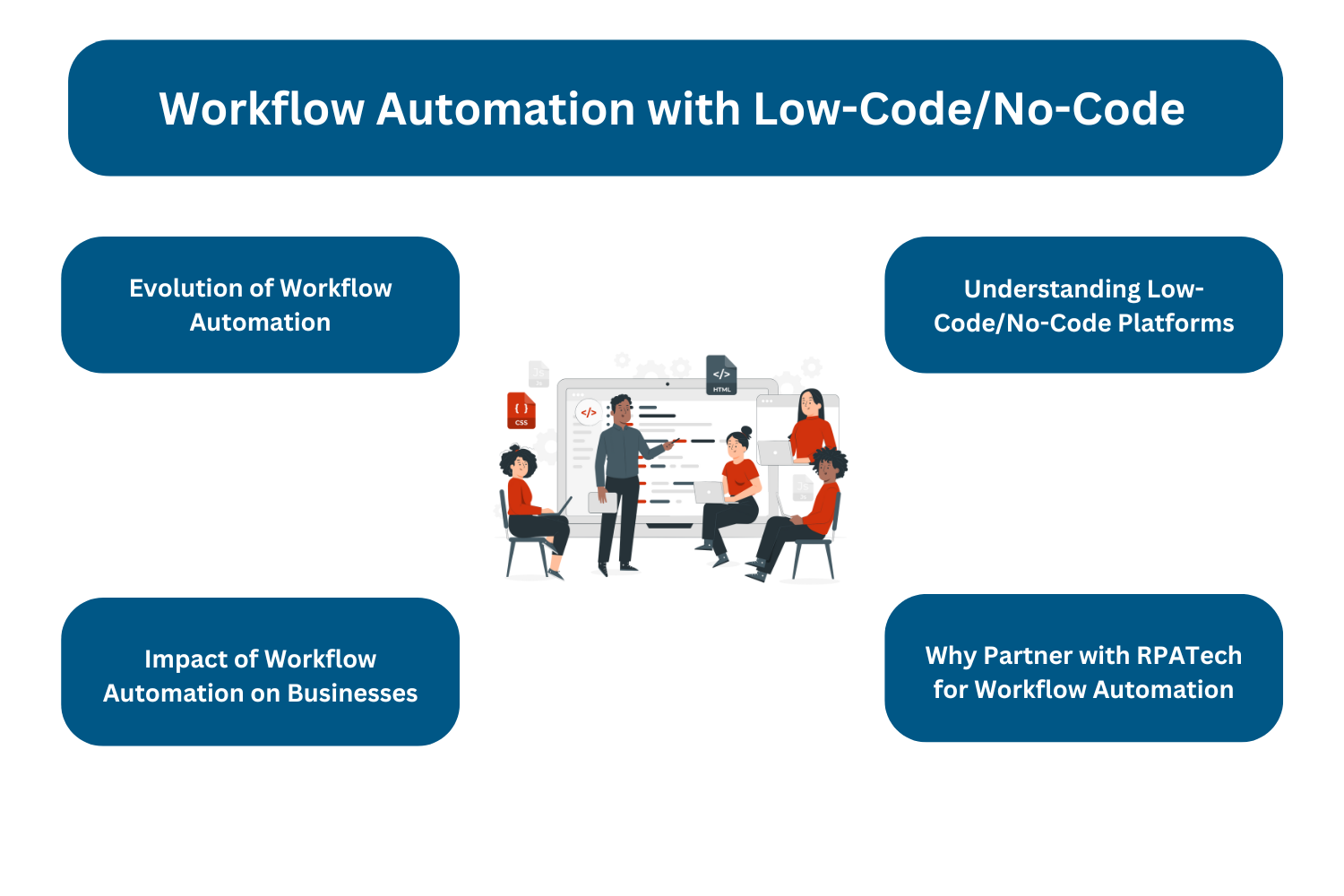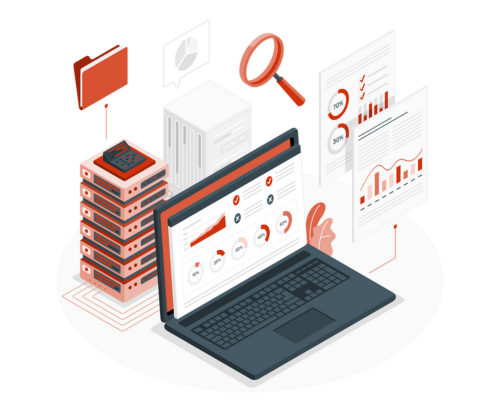In the realm of business operations, automation has emerged as a game-changer. It’s a powerful tool that can streamline processes, boost efficiency, and drive productivity. But as with any technology, understanding its nuances is crucial. This is particularly true when comparing Robotic Process Automation (RPA) and Workflow Automation. These two technologies, while similar in their goal of automation, differ significantly in their applications and benefits. RPA is designed to automate rule-based, repetitive tasks. It’s like a virtual worker, capable of mimicking human actions in various software applications.
On the other hand, Workflow Automation focuses on streamlining business processes. It’s about designing workflows that automate the sequence of tasks, activities, and procedures within a business process. The choice between RPA and Workflow Automation can be complex. It requires a deep understanding of each technology’s strengths, limitations, and best-fit scenarios. This article aims to provide that understanding, offering a comprehensive comparison of RPA and Workflow Automation. We’ll delve into their unique benefits, implementation complexities, cost implications, and much more. Whether you’re a tech startup founder, a business operations manager, or an IT professional, this guide will help you make an informed decision about which automation technology is right for your business needs.
Understanding the Basics
Before we delve into the comparison, it’s essential to understand what each technology entails. Both RPA and Workflow Automation are part of the broader field of business process automation. However, they each have unique characteristics and applications. Let’s start by defining RPA and Workflow Automation.
What is Robotic Process Automation (RPA)?
Robotic Process Automation, or RPA, is a technology that uses software robots or ‘bots’ to automate repetitive, rule-based tasks. These tasks can range from simple data entry to complex processes involving multiple software applications. RPA bots can mimic human actions, such as clicking buttons, typing, copying and pasting data, and even reading and interpreting information.
Here are some key characteristics of RPA:
- It’s non-intrusive and works on the user interface level, meaning it doesn’t require deep system integration.
- It’s best suited for tasks with clear rules and structured data.
- It can work 24/7, increasing productivity and reducing the chance of human error.
- It’s highly scalable, allowing businesses to easily increase or decrease the number of bots as needed.
What is Workflow Automation?
Workflow Automation, on the other hand, is about automating a series of tasks that make up a business process. It involves mapping out the workflow, identifying tasks that can be automated, and then using software to automate those tasks. Workflow Automation is often used to streamline complex processes that involve multiple people or departments.
Here are some key characteristics of Workflow Automation:
- It’s designed to improve efficiency and consistency in business processes.
- It often involves tasks that require decision-making or approval steps.
- It provides visibility into the process, making it easier to identify bottlenecks and areas for improvement.
- It can integrate with other systems, allowing for seamless data flow between different software applications.
The Evolution of Automation Technologies
The journey of automation technologies has been a fascinating one. From the early days of simple task automation to the current era of intelligent automation, the field has seen significant advancements.
Tracing the History of RPA
RPA has its roots in screen scraping technologies of the 1990s. These technologies were used to extract data from legacy systems, which was a tedious and error-prone task when done manually. Over time, these technologies evolved into more sophisticated RPA tools that could not only extract data but also interact with software applications just like a human user would.
The Development of Workflow Automation
Workflow Automation, on the other hand, has its origins in Business Process Management (BPM) and Enterprise Resource Planning (ERP) systems. These systems were designed to manage and optimize business processes, but they often required significant customization and were not very user-friendly. With the advent of cloud computing and Software as a Service (SaaS), Workflow Automation tools have become more accessible and easier to use, enabling businesses of all sizes to streamline their processes and improve efficiency.
RPA vs Workflow Automation: A Comparative Analysis
When it comes to choosing between RPA and Workflow Automation, there are several factors to consider. These include the complexity of implementation, scalability, cost implications, and the impact on employee productivity.
Implementation Complexity
RPA is often seen as less complex to implement than Workflow Automation. This is because RPA tools can mimic human actions and interact with existing software applications without the need for extensive coding or system changes.
However, the complexity can increase when dealing with more advanced RPA implementations that involve AI and ML capabilities.
Scalability and Flexibility
RPA is highly scalable and flexible, allowing businesses to automate a wide range of tasks across different applications and systems. However, this scalability can also lead to increased complexity, especially when managing a large number of bots. Workflow Automation, on the other hand, may not be as flexible as RPA, but it offers a more structured approach to process automation, which can be easier to manage at scale.
Cost Implications
The cost of implementing RPA can be higher than Workflow Automation, especially when considering the licensing fees for RPA tools. However, the potential ROI from RPA can also be significant, as it can lead to substantial cost savings in the long run.
Impact on Employee Productivity
Both RPA and Workflow Automation can have a positive impact on employee productivity. RPA can free up employees from repetitive tasks, allowing them to focus on more value-added activities. Workflow Automation, on the other hand, can streamline processes and reduce bottlenecks, leading to improved efficiency and productivity.
Key Benefits and Applications
Understanding the key benefits and applications of RPA and Workflow Automation can help tech startup founders make an informed decision. Both technologies offer unique advantages that can enhance business operations and drive efficiency.
RPA Benefits and Use Cases
RPA offers several benefits that make it an attractive option for businesses.
These include:
- High accuracy and consistency in task execution
- Quick wins and immediate benefits
- Ability to handle high-volume data tasks
- Flexibility in adapting to different applications
- Potential for enabling digital transformation
RPA can be particularly beneficial in industries such as finance, healthcare, and manufacturing, where there are many rule-based, repetitive tasks.
For instance, RPA can be used for data extraction and processing, handling seasonal or fluctuating workloads, and facilitating quick integration with new technologies.
Workflow Automation Advantages and Applications
Workflow Automation also offers a range of benefits, including:
- Improved process visibility and standardization
- Enhanced collaboration and employee engagement
- Ability to enforce business rules and maintain process consistency
- Potential to support remote work environments
- Facilitation of continuous improvement
Workflow Automation can be particularly useful for cross-departmental processes and tasks that require coordination between different teams. For example, it can be used for resource allocation, workflow design and optimization, risk management, and enhancing customer experiences. By automating these processes, businesses can reduce bottlenecks, improve time management, and align their operations with strategic goals.
Integration and Compatibility with Existing Systems
The ability of RPA and Workflow Automation to integrate with existing systems is a crucial factor for tech startups. This aspect can significantly influence the ease of implementation and the overall success of the automation initiative.
RPA and Legacy Systems
RPA stands out for its ability to work with legacy systems. This technology can interact with the user interface of existing applications in the same way a human would. This means that RPA can be implemented without the need for extensive system changes or upgrades, making it a cost-effective solution for businesses with older systems.
Workflow Automation and System Interoperability
Workflow Automation, on the other hand, often requires a higher degree of system interoperability. This technology typically integrates with existing systems through APIs or other integration methods. While this may require more upfront work, it can result in a more seamless and efficient workflow, as tasks can be automated across multiple systems and platforms.
Addressing Misconceptions and Strategic Considerations
In the realm of automation technologies, misconceptions abound. These can lead to misguided decisions, impacting the effectiveness of the chosen solution.
Common Misconceptions About RPA and Workflow Automation
One common misconception is that RPA and Workflow Automation are interchangeable. While both technologies aim to automate tasks, they serve different purposes and are suited to different types of tasks. Another misconception is that these technologies will replace human workers, when in fact, they are designed to complement human skills and free up staff for more complex, value-added tasks.
Strategic Decision-Making: Choosing the Right Solution
Choosing between RPA and Workflow Automation requires strategic decision-making. The choice should be guided by the specific needs of the business, the nature of the tasks to be automated, and the existing IT infrastructure. Remember, the goal is not just to automate, but to automate wisely, choosing the solution that will bring the most value to your business.
The Role of AI and ML in Enhancing Automation
Artificial Intelligence (AI) and Machine Learning (ML) are transforming the landscape of automation technologies. They are enhancing the capabilities of both RPA and Workflow Automation, enabling them to handle more complex tasks and make intelligent decisions.
Enhancing RPA with AI and ML
AI and ML can significantly enhance the capabilities of RPA. For instance, AI can enable RPA bots to understand and process natural language, while ML can help them learn from past actions and improve their performance over time. This makes RPA more adaptable and capable of handling complex, non-routine tasks.
Workflow Automation and Advanced Analytics
AI and ML also play a crucial role in Workflow Automation. They can be used to analyze workflow data, identify bottlenecks, and suggest improvements. Moreover, predictive analytics, powered by ML, can help anticipate future workflow issues and take proactive measures, further enhancing the efficiency and effectiveness of Workflow Automation.
Future Trends and the Road Ahead
As we look to the future, it’s clear that both RPA and Workflow Automation will continue to evolve and play a crucial role in business operations. The integration of these technologies with advanced AI and ML capabilities is set to redefine the automation landscape.
Emerging Trends in RPA and Workflow Automation
One of the key trends in RPA is the shift towards intelligent automation. This involves the integration of RPA with cognitive technologies like AI and ML to create more sophisticated automation solutions. Similarly, Workflow Automation is moving towards more adaptive and dynamic workflows, enabled by advanced analytics and decision management tools.
Preparing for the Future of Automation in Business
To prepare for the future of automation, businesses need to develop a clear automation strategy. This should involve identifying the right processes for automation, choosing the appropriate technology, and investing in the necessary skills and training. By doing so, businesses can harness the full potential of RPA and Workflow Automation, driving efficiency, productivity, and innovation.
Conclusion and Recommendations
In conclusion, both RPA and Workflow Automation offer unique benefits and applications, making them valuable tools for businesses seeking to improve efficiency and productivity.
However, the choice between these two technologies should be guided by the specific needs and circumstances of your business.
As a tech startup founder, it’s crucial to understand the nuances of these technologies and how they can be leveraged to drive your business forward.
By making informed decisions about the implementation of RPA and Workflow Automation, you can ensure that your business is well-positioned to thrive in the digital age.

Automate Your Workflows Within a Few Days or Weeks
Say goodbye to spending months on developing workflow automation through traditional programming. Now, you can go live with your workflow automation in just a few days or weeks. Click to find out how!



